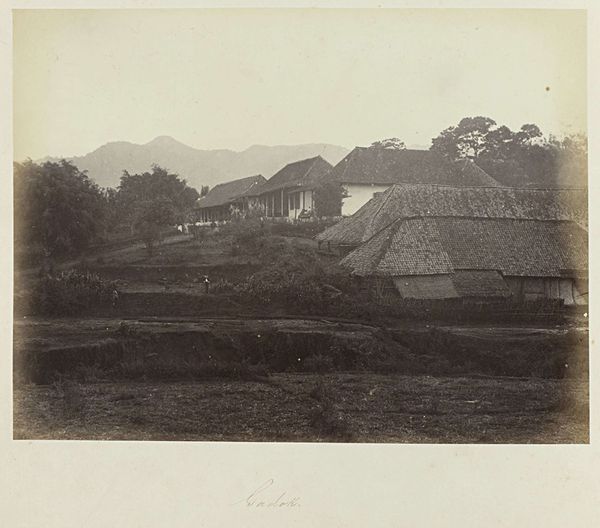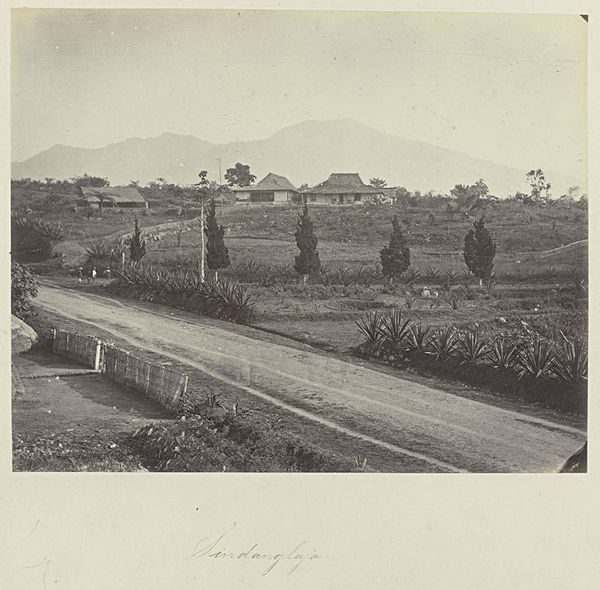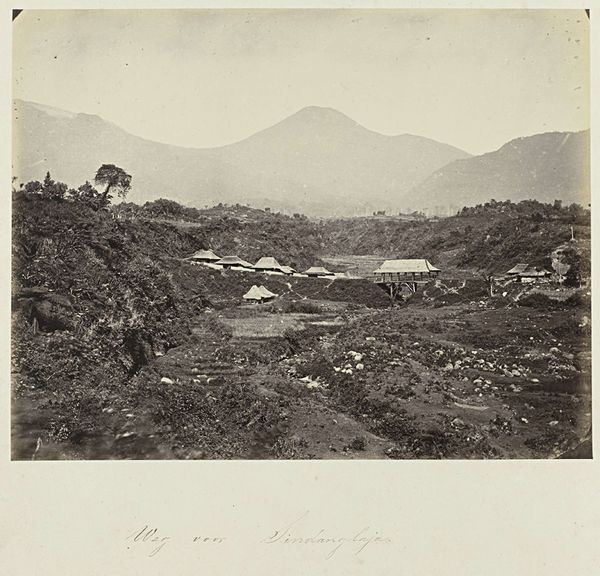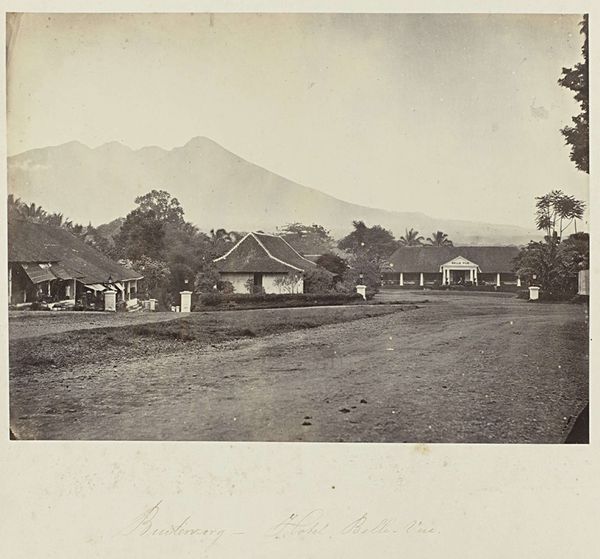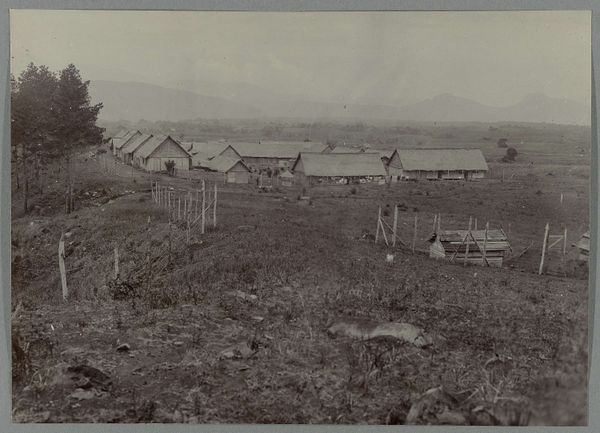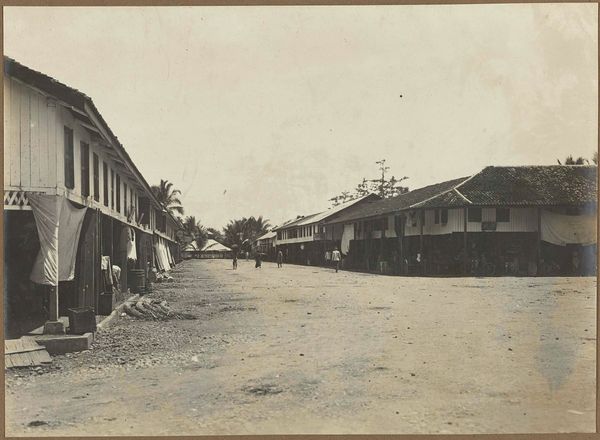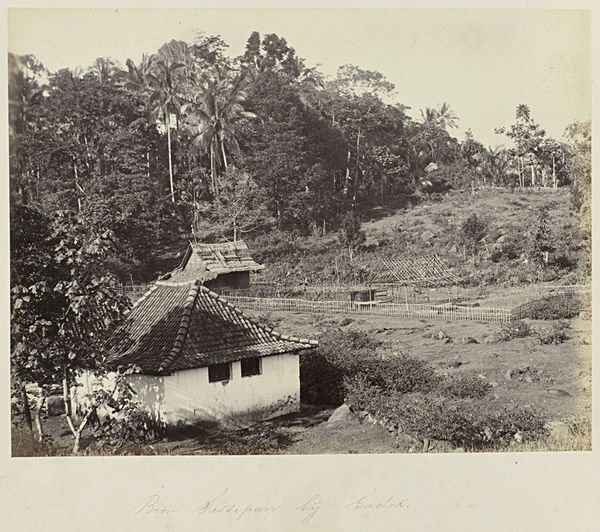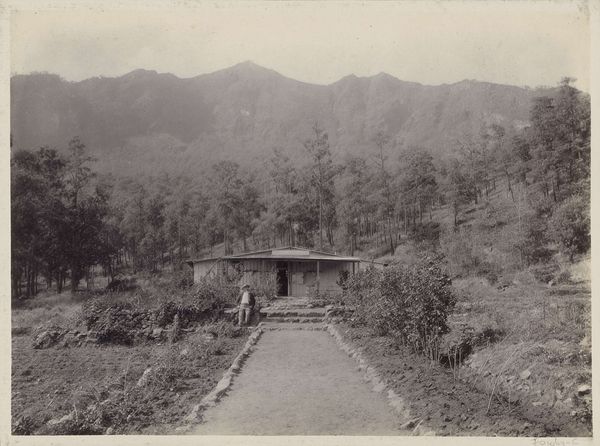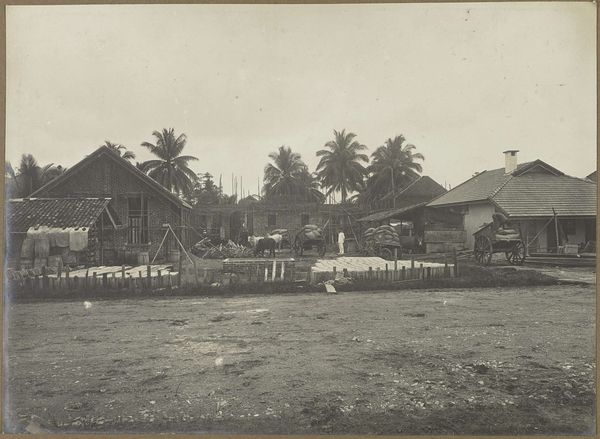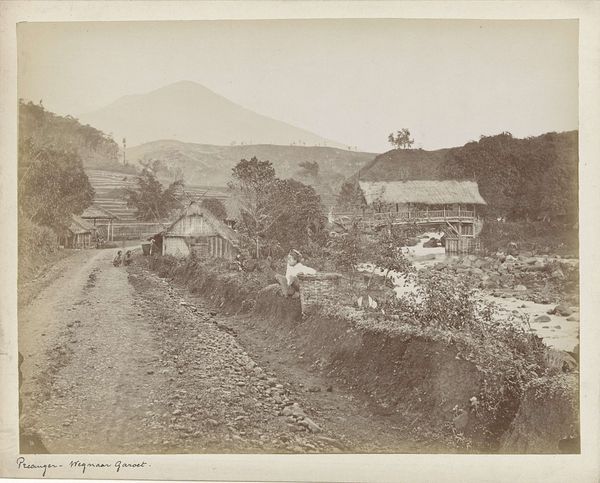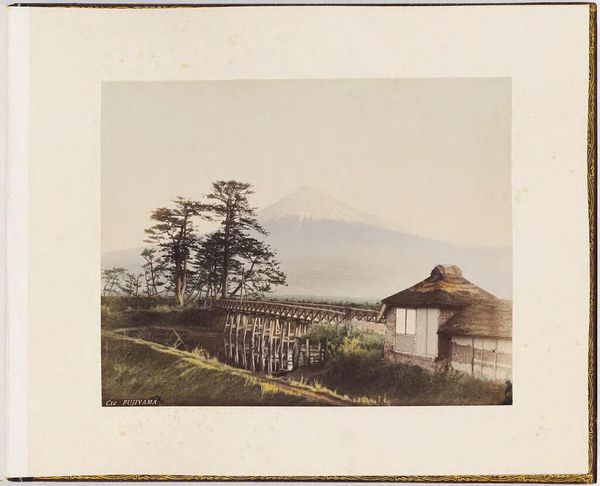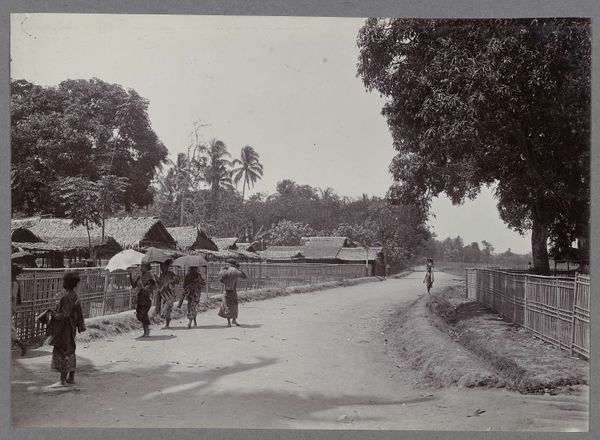
photography, albumen-print
#
landscape
#
street-photography
#
photography
#
orientalism
#
genre-painting
#
albumen-print
Dimensions: height 172 mm, width 241 mm
Copyright: Rijks Museum: Open Domain
Editor: This photograph, “Kampong bij Sindanglaja,” by Woodbury & Page, was taken sometime between 1863 and 1869, and it’s an albumen print. The image shows a village street lined with houses. It feels very still, very composed. What catches your eye when you look at this piece? Curator: Well, I immediately think about the materiality of the image itself, and its implications. This is not just a depiction of a place, but an artifact born from a specific set of circumstances and labor. We're looking at an albumen print – light-sensitive chemicals manipulated by the photographers, printed on paper likely imported. Editor: Imported? Curator: Absolutely. Consider the logistics: transporting materials across vast distances in the mid-19th century. The act of documenting this landscape in Indonesia inherently involves trade, colonialism, and the exploitation of resources. It's impossible to separate the beauty of the scene from the mechanics and systems that made the image possible. Editor: So, even the simple act of taking a picture had political implications at the time? Curator: Precisely. Think about the labor involved, too. Who was hired to carry equipment, develop the prints? Were they local villagers? Were they paid fairly? The photograph isn’t just capturing a kampong; it’s also unintentionally revealing the structure of colonial enterprise. How might our understanding shift if we knew more about the working conditions in the studio? Editor: That’s fascinating, I never considered that angle. I was just thinking about the composition and the light! Curator: The aesthetic choices can't be divorced from their context. The photographers weren't simply observing, they were participating in a larger system. Reflecting on the materials used, their origins, and the human labor invested offers a more complete and critical interpretation. Editor: Thank you; this helps me see this in a totally different light now. Curator: You’re very welcome; keep in mind that examining material culture opens exciting avenues in art and historical study!
Comments
No comments
Be the first to comment and join the conversation on the ultimate creative platform.
